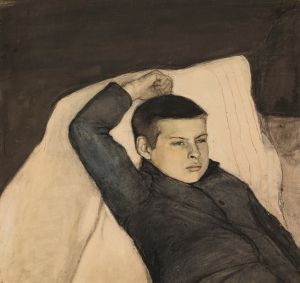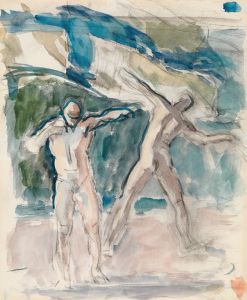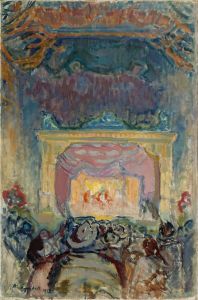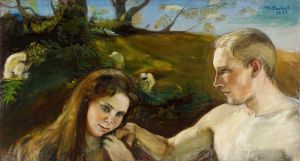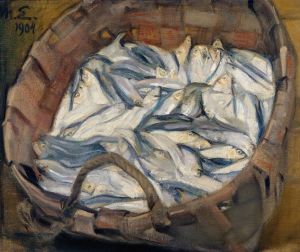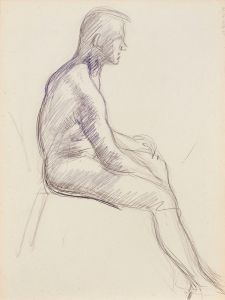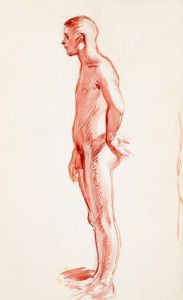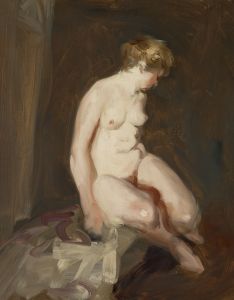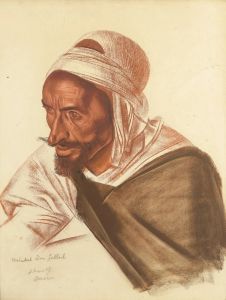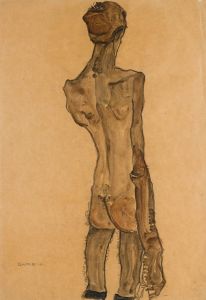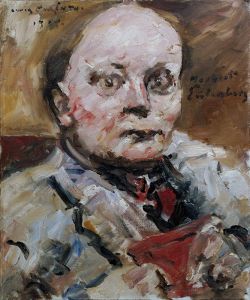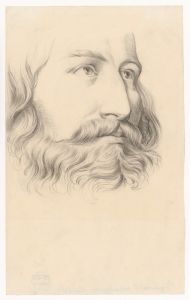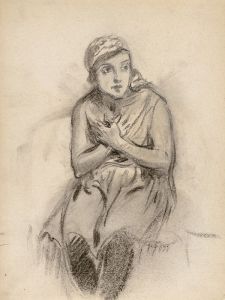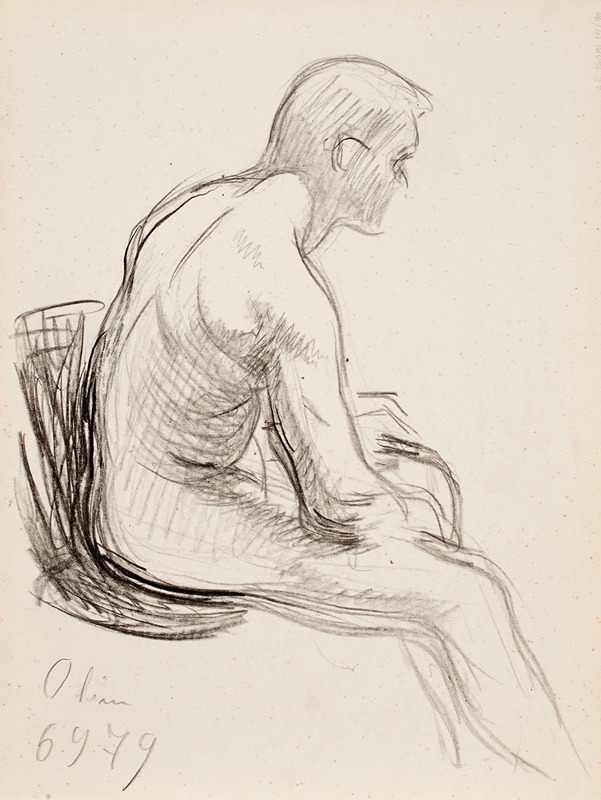
Istuva alaston mies
A hand-painted replica of Magnus Enckell’s masterpiece Istuva alaston mies, meticulously crafted by professional artists to capture the true essence of the original. Each piece is created with museum-quality canvas and rare mineral pigments, carefully painted by experienced artists with delicate brushstrokes and rich, layered colors to perfectly recreate the texture of the original artwork. Unlike machine-printed reproductions, this hand-painted version brings the painting to life, infused with the artist’s emotions and skill in every stroke. Whether for personal collection or home decoration, it instantly elevates the artistic atmosphere of any space.
Magnus Enckell's Istuva alaston mies (translated as Seated Nude Man) is a painting by the Finnish symbolist artist Magnus Enckell (1870–1925). Enckell is recognized as one of Finland's most prominent artists of the late 19th and early 20th centuries, known for his contributions to Symbolism and his exploration of themes such as human emotion, spirituality, and the human form.
The artwork, Istuva alaston mies, depicts a seated nude male figure. The painting is notable for its simplicity and focus on the human body, rendered with sensitivity and restraint. Enckell's approach to the nude figure reflects his interest in Symbolism, where the human form often serves as a vessel for conveying deeper emotional or spiritual meanings. The subdued color palette and soft lighting in the painting emphasize the contemplative and introspective mood of the subject.
Enckell was known for his ability to capture the human figure with a sense of dignity and introspection, and this painting is no exception. His works often explore themes of vulnerability and inner strength, and Istuva alaston mies aligns with these recurring motifs. The painting also reflects Enckell's broader artistic development, which transitioned from darker, more somber tones in his early career to a brighter and more colorful style in his later works.
Magnus Enckell was a central figure in the Finnish art scene during his lifetime. He studied at the Finnish Art Society Drawing School in Helsinki and later in Paris, where he was influenced by Symbolist artists and movements. His works often bridge the gap between Finnish national romanticism and European Symbolism, making him a key figure in the cultural history of Finland.
The exact date of creation for Istuva alaston mies is not definitively documented, but it is consistent with Enckell's broader body of work that frequently featured male nudes. These works were often regarded as groundbreaking for their time, as they challenged traditional norms and explored themes of identity and human emotion in a way that was both modern and deeply personal.
Today, Magnus Enckell's works, including Istuva alaston mies, are celebrated for their artistic and cultural significance. They are housed in various collections, including the Ateneum Art Museum in Helsinki, which holds many of his most important pieces. Enckell's legacy continues to influence Finnish art and is studied for its contributions to both national and international art movements of the late 19th and early 20th centuries.






